Authors in traditional publishing receive advances, an upfront payment against future royalties, which can range from a few thousand to millions depending on the author’s profile and the book’s potential. Royalties typically vary from 5% to 15% of the book’s retail price. In self-publishing, authors have the potential for higher royalty rates (60–90%) but shoulder the upfront costs of production and marketing. Success in either model depends on marketing efforts, genre and reader engagement.
Are you an aspiring author who wants to know how book writers make money? This post breaks down the different ways authors earn revenue, including through royalties and advances. Furthermore, it explains how book royalties are calculated and how advances work. Moreover, it will discuss how much authors can expect to earn from publishing a book with traditional publishers versus self-publishing, also discussing the most financially successful book genres. As an inspiration, this post also provides examples of both traditionally published and self-published authors who have achieved financial success. Whether you are just starting out or you are a seasoned author, this post has valuable information that can help you earn more money from your writing.
- How do book authors make money?
- What do we know about financially successful writers?
- What is an author’s average salary?
- How much do authors make per 1,000 books sold?
- What are the factors affecting writers’ earnings?
- Why professional editing services are key to financial success for authors?
- Examples of traditionally published authors who achieved financial success
- Examples of self-published authors who achieved financial success
- What are the most financially successful genres?
- What are the bestselling books of all time?
How do book authors make money?
When publishing a book, authors earn revenue through royalties and advances. Royalties are a percentage of revenue for each copy of the book sold, irrespective of the format. On the other hand, advances are paid to the author after signing the book contract. The royalties depend on the book format, production cost, and publisher’s terms. Traditional publishers usually offer 5–15% royalties for paperback and hardcover books. In contrast, the royalties could be as high as 25% for ebooks and audiobooks. However, self-publishing offers no advance payments but higher royalties in the long run.
On the other hand, authors receive advances before a book arrives on the bookshop shelves. It is worth noting that the advance amount is determined by the publisher’s forecast of the book’s future sales revenue. Subsequently, it is balanced against the royalties earned. This implies that the author will not receive any royalties until the number of book copies sold matches the advance amount. This means paying out an advance comes with a certain financial risk for the publisher.
How are book advances calculated?
Book advances can differ significantly, ranging from a few to millions of dollars (or equivalent in other currencies). Publishers usually predict the book’s potential sales and decide on the advance sum accordingly. However, if the book’s subject is controversial or the author is a well-known personality, the advance sum may vary. In the present day, Big Five publishing houses offer authors advances starting at around $5,000, whereas independent or smaller publishers typically offer advances starting at around $1,000. If you self-publish, you will not receive any advance payments since you will act as both the author and publisher.
How are book royalties calculated?
After a book sale, the author receives a certain percentage of the revenue generated by the sale — called royalties. The contract signed between the publisher and the author determines this percentage. If the book is published using print-on-demand (POD) platforms, the conditions of the royalties are outlined in their agreement.
When an individual purchases an ebook, audiobook or paper copy, the author receives earnings per sale based on a percentage of the book’s retail price or the publisher’s net revenue. Before the author receives the royalties, various costs affecting the value of royalties may be involved. For instance, they may include discounts, returns and distribution fees.
How much are book royalties?
Traditional publishers
The Big Five refers to the traditional publishers — vast, established international corporations making billions of dollars in profits.
They include:
- Hachette Livre, founded in 1826 in France, currently has sixty imprints;
- HarperCollins, established in 1817, is a prolific publisher of English-language titles and imprints like Harlequin;
- Macmillan Publishers, founded in 1843, operates in over 70 countries. Macmillan Publishers originally published Alice’s Adventures in Wonderland and The Jungle Book;
- Penguin Random House has over 300 imprints worldwide and dates back to the early nineteenth century;
- Simon & Schuster publishes over 2,000 titles annually and has 35 imprints.
Despite the rapid rise of self-publishing, traditional publishers, especially the Big Five, are still significant players in the publishing market. For instance, the Big Five controlled over 80% of the US book market in 2022. Royalties offered by traditional publishers vary depending on the format or medium of the book. On average, the author’s royalties paid out by the traditional publishers are as follows:
- paperback: 5–7% royalties,
- hardcover: 15% royalties,
- ebook and audiobook: 25%.
These profits are significantly lower than the 35–90% range offered by the POD platforms. However, in this case, the publisher bears the risks and costs associated with book production. For instance, they usually provide the author with free book editing, cover design and marketing. Additionally, they may offer book advances offset by future royalties.
POD platforms
Here is the breakdown of the royalties offered by POD platforms.
If an author publishes a book priced between $2.99 and $9.99 with Amazon KDP, they will earn 70% royalties. Books priced below $2.99 or above $9.99 will earn 35% with Amazon KDP. Apple Books only publishes ebooks and offers a flat royalty rate of 70%. Barnes & Noble offers printed books, audiobooks and ebooks, and authors can earn royalties of 70%, 55%, and 45%, respectively. On the other hand, Draft2Digital provides 60% royalties for ebooks and 45% for printed books (less printing cost). They do not offer any audiobook production options.
Moreover, authors who publish on Google Play Books can earn 70% on ebook sales in 60+ countries. Furthermore, Google Play Books yield 45% royalties for ebooks sold to customers in some Asian countries. In turn, IngramSparks offers 65–70% ebook royalties (depending on the market) and 45% on printed books (less printing cost). In contrast, Kobo only offers royalties on ebooks: 70% for ebooks priced above $2.99 and 45% for those priced below $2.99. Lastly, Lulu pays 90% royalties for ebooks and 80% for printed books.
| POD platform | Royalties | ||
| Ebooks | Printed books | Audiobooks | |
| Amazon KDP | 70% for books priced $2.99–9.99; 35% if below $2.99 or above $9.99 | 60% | 40% or 20%, depending on the distribution channel |
| Apple Books | 70% | N/A | N/A |
| Barnes & Noble | 70% | 55% | 45% |
| Draft2Digital | 60% | 45% less the printing cost | N/A |
| Google Play Books | 70% or 52%, depending on the market | N/A | N/A |
| IngramSparks | 65–70%, depending on the market | 45% less the printing cost | N/A |
| Kobo | 70% royalties for ebooks priced above $2.99 and 45% for those below $2.99 | N/A | 45% |
| Lulu | 90% | 80% | N/A |
What do we know about financially successful writers?
A 2016 study by Written Word Media revealed certain characteristics of financially successful writers, including writing consistency, cover, editing and genre.
Writing quantity and consistency
Financially successful authors tend to write more, with an average of 13.75 books published compared to 7.4 books for emerging authors. In addition, they spend almost double the time writing per week (31 hours) compared to emerging writers (16 hours). Furthermore, the study shows that success often takes time, with 60% of established writers having written for three or more years.
Professional presentation
Financially successful writers prioritise professional cover design, with 68% spending over $100 on cover design, compared to 39% of early-career writers.
Professional editing
A significant majority of financially successful authors (79%) hire professional editors for their books, compared to 56% of emerging writers. Moreover, they tend to invest more in editing, with 53% spending between $100–500 on copyediting, proofreading, developmental editing or line editing. On the other hand, inexperienced writers often spend less.
Genre selection
Understanding the popularity of genres is crucial because certain genres, such as romance, are more conducive to financial success, while niche genres may pose challenges in terms of revenue. Thus, financially successful authors often write in popular genres, mainly romance, paranormal romance and erotica. Additionally, thriller and science fiction also show higher representation among established authors. In contrast, they tend to avoid genres like religious fiction.
What is an author’s average salary?
There is no straightforward answer to the question of how much authors earn, and their salaries and income may depend on numerous factors.
For instance, in 2018, the Authors Guild conducted a survey including more than 5,000 authors from a broad spectrum of writers in the industry. They found the median for full-time writers to be at $20,300 and for part-time writers a median of $6,080. Next, in May 2021, the Bureau of Labor Statistics found that the average salary for a person classified as a writer or author was $69,510. Most recently, the report commissioned by the Alliance of Independent Authors found that the typical income for an indie author in 2022 is approximately $12,755, increasing from $8,487 in 2021.
How much do authors make per 1,000 books sold?
Looking at the table above, we know that the PODs’ royalties vary between 45% and 80% for printed books, averaging at 62.5%. To establish the price of a book, let us assume that most paperback novels with a considerable size range from $13.95 to $17.95 (according to McZell Publishing). Now, if we consolidate this data, we can determine how much an author can make per 1,000 books sold per year.
| Royalties | 62.5% |
| Book price | $16 |
| Number of books sold | 1,000 |
| Total revenue | $10,000 |
In this example, a thousand copies of a book priced at $16 yielded an income of $10,000 for a self-publishing author. However, these examples do not include costs that self-publishing authors may incur, such as marketing or editing expenses.
For a writer publishing with a traditional publisher, these figures will look slightly different. This is because traditional publishing houses offer 5–7% royalties for paperback titles.
| Royalties | 6% |
| Book price | $16 |
| Number of books sold | 1,000 |
| Total revenue | $960 |
On the other hand, the same number of copies sold at the same price with a traditional publisher results in much lower earnings — $960 per 1,000 copies sold.
What are the factors affecting writers’ earnings?
Authors’ earnings may vary depending on several factors, including genre, market trends, editing and marketing costs and many others.
Book series
It is also worth noting that the more books you sell, the more you will earn in total royalties. If you write a series, you can count on recurring clients.
Book trends
Additionally, current trends can play a role in a book’s success, particularly for non-fiction works that align with popular activities, sports or political figures. Young adult fantasy novels, children’s books, and historical fiction can also experience surges in popularity at different times, similar to romance novels.
Editing costs
As an author, it is essential to recognise that mistakes are inevitable, and a second set of eyes can help catch inconsistencies and errors. Include editing services costs in your publishing budget to ensure an error-free and professional-looking publication.
Genre
The type of book you write, including its content and genre, can definitely impact how much money it will make. For instance, even if you write a wonderfully detailed and well-written book on forensic accounting, it may not have an extensive enough audience to generate significant earnings.
Marketing
Marketing is key to success and can make all the difference in whether or not readers know your book exists. Selling books can be time-consuming, particularly for self-published authors who must handle their own marketing and other elements of the publishing process.
Production costs
The quality of the writing also plays a role in a book’s success, with factors such as the book’s design and format impacting earnings. For example, a hardback or coffee-table book may cost more to produce but can generate higher profits per book sold, whereas a black-and-white or slim-volume book may have lower production costs but result in lower profits per book sold.
Why professional editing services are key to financial success for authors?
While over 3 million books are published each year, very few are read widely and less than 500 make it to the New York Times bestseller lists. There are various opinions regarding what makes a title a bestseller and contributes to the author’s financial success. However, evidence shows that using professional editing services can significantly contribute to the financial success of an author.
According to Written World Media, 96% of authors who have made $100,000 or more in a single year from book sales choose a professional to edit their books. Editing services ensure that the book is polished, error-free and ready for publication, which can lead to higher sales and positive reviews. Furthermore, investing in professional editing services can help authors avoid costly mistakes and ensure their book is of the highest quality possible. As a result, this can lead to higher sales, positive reviews and increased recognition in the literary world.
Editing services available to authors include proofreading, copyediting, line editing and developmental editing. Proofreading is the final step in the editing process and focuses on correcting spelling, punctuation, and grammar errors. Next, copyediting goes a step further and involves correcting syntax, grammar, and style issues. Line editing is a more in-depth process that improves sentence structure, flow and clarity. Finally, developmental editing is the most comprehensive type of editing and involves evaluating the plot, characters and overall structure of the book. Each type of editing service is crucial in ensuring that the book is well-written, engaging, and easy to read.
Examples of traditionally published authors who achieved financial success
Stephen King
The King of Horror, Stephen King, is a prolific and successful writer. He has published over 120 works and sold over 350 million copies, with a net worth of an estimated $500 million. However, his earnings come not only from book sales. His works inspired numerous films, television shows and merchandise.
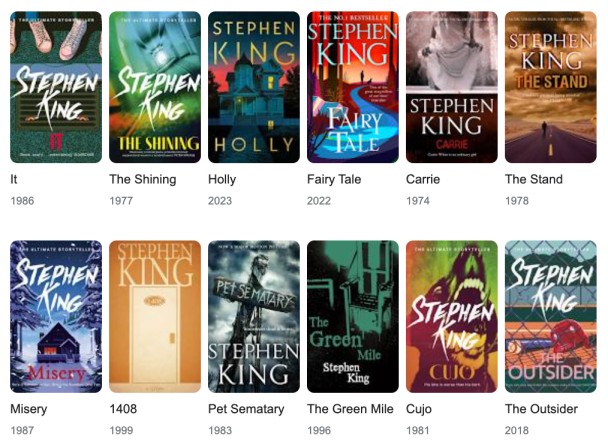
Danielle Steel
Romance novelist Danielle Steel has sold over 900 million copies of her 290+ books globally. Her annual income is believed to be more than $20 million, and her net worth is estimated to be $390 million. Furthermore, twenty-five of her books have been adapted into films.
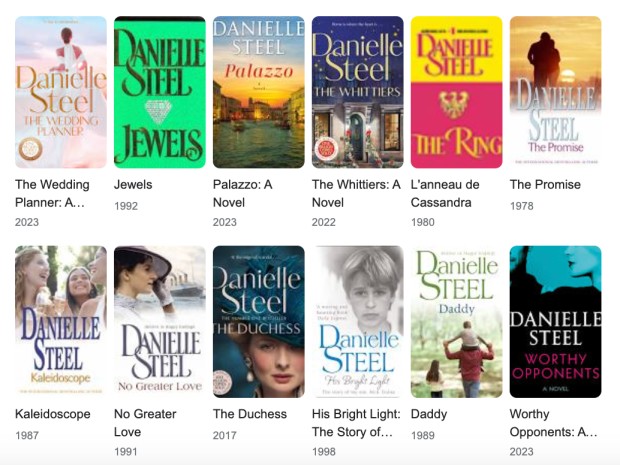
James Patterson
James Patterson is a bestselling author who has published more than 394 works and sold more than 425 million books. More than a hundred of his books were New York Times bestsellers. He is famous for the Alex Cross, Michael Bennett, Women’s Murder Club, Maximum Ride, Daniel X, NYPD Red and Witch & Wizard series and many stand-alone thrillers, non-fiction and romance novels.
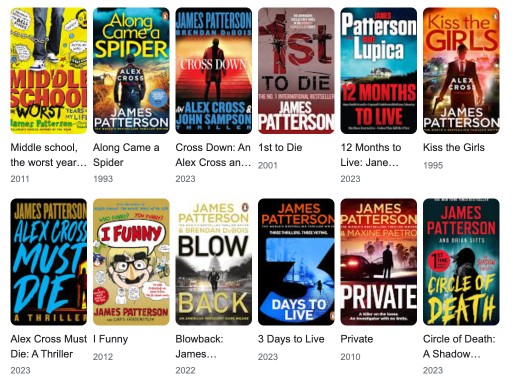
Examples of self-published authors who achieved financial success
Hugh Howey
Howey self-published his science-fiction novel Wool in 2011 and sold the film rights to 20th Century Fox in 2012. While we wait for the film adaptation, Apple TV+ released a series titled Silo, starring Rebecca Ferguson, Rashida Jones, David Oyelowo and Tim Robbins. He also signed a $500,000 distribution deal with Simon & Schuster and has now sold over 3 million copies of his works. However, Howey also retains full rights to continue distributing Wool eBook himself. MGM+ has recently released a TV series based on another of Howey’s novella, Beacon 23.
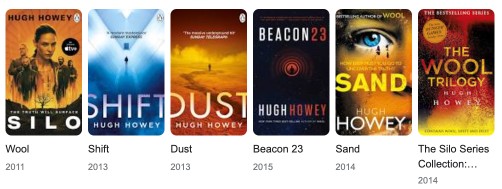
Christopher Paolini
American novelist Christopher Paolini has an estimated net worth of $25 million. Eragon, initially published by Paolini and his parents, was published by Knopf in 2003. The same year, Eragon became the third-bestselling children’s hardback book and the second-bestselling paperback of 2005. In 2006, a feature film under the same title hit the cinemas.
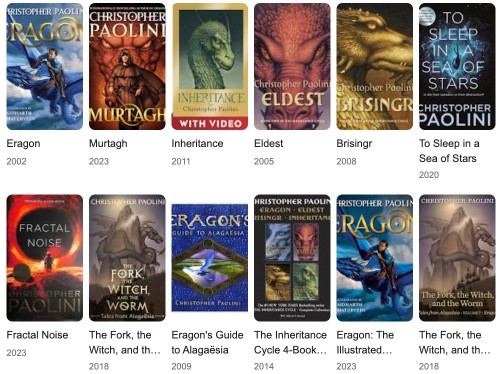
Andy Weir
Andy Weir, author of The Martian, has an estimated net worth of $55 million as of 2023. The Martian is Weir’s 2011 sci-fi debut novel, rejected by several literary agents and publishers. Within three months after listing on Amazon KDP, it sold 35,000 copies. Soon, it caught the attention of Crown Publishing Group, who purchased the exclusive publishing rights and published it in 2014. A film adaptation under the same title, directed by Ridley Scott and starring Matt Damon, was released in 2015, grossing over $630 million worldwide.
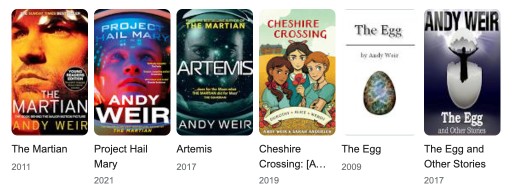
What are the most financially successful book genres?
Obviously, some genres are more popular than others. According to this 2023 survey:
- The romance genre is the top-selling fiction category, generating a whopping $1.44 billion in sales revenue.
- Fantasy books are another popular category, especially in the YA sector. Together with science fiction, fantasy books generate over $590 million in revenue in the United States annually.
- Comic books are a fiction category that is rapidly gaining popularity. Comic books and graphic novels sold over 94 million copies in 2021, bouncing from 63 million copies in 2020. These sales generated over $2.07 billion in revenue, which increased by 70% compared to the previous year.
- Religious/inspirational books bring in $720 million in revenue. These texts include how-to books, holy texts, and memoirs that inspire and guide readers.
- Horror books brought in $79.6 million in revenue.
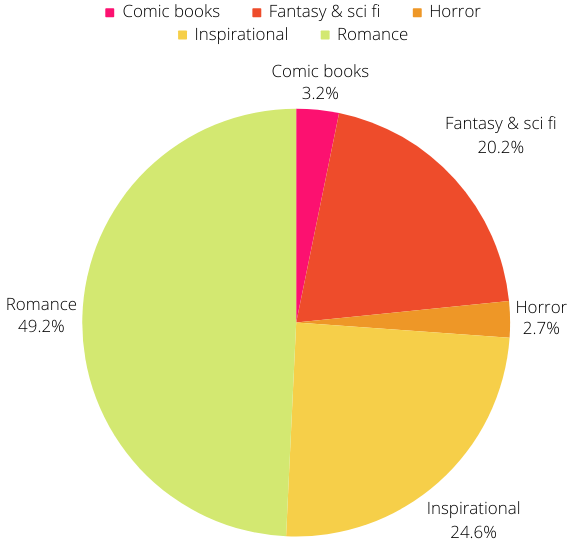
What are the bestselling books of all time?
If we look at the stats concerning the bestselling books of all time, they also support this data. For example, according to Wordsrated, the top-selling ten English-language books of all time include fantasy and thriller/mystery titles only. The Hobbit by J. R. R. Tolkien ranks first, with 140.6 million copies sold since it was published in 1937.
| Title | Author | Genre | Estimated sales |
| The Hobbit | J. R. R. Tolkien | Fantasy | 140.6 million |
| Harry Potter and the Philosopher’s Stone | J. K. Rowling | Fantasy | 120 million |
| And Then There Were None | Agata Christe | Thriller / Mystery | 100 million |
| The Lion, the Witch, and the Wardrobe | C. S. Lewis | Fantasy | 85 million |
| She: A History of Adventure | H. Rider Haggard | Fantasy | 80 million |
| The Da Vinci Code | Dan Brown | Thriller / Mystery | 80 million |
| Harry Potter and the Chamber of Secrets | J. K. Rowling | Fantasy | 77 million |
| Harry Potter and the Prisoner of Azkaban | J. K. Rowling | Fantasy | 65 million |
| Harry Potter and the Goblet of Fire | J. K. Rowling | Fantasy | 65 million |
| Harry Potter and the Order of the Phoenix | J. K. Rowling | Fantasy | 65 million |
Final thoughts
In the vast landscape of book writing, the question persists: How much do authors make per book? The answer remains as varied as the stories they tell. The figures tell a story of contrasts, with traditional publishers offering modest royalties but shouldering production costs. At the same time, self-publishing opens the door to greater earnings over time. To shed light on the diverse landscape authors navigate, the breakdown of royalties across different platforms, from Amazon KDP to Barnes & Noble, is helpful. Drawing from the experiences of successful authors, this post identified common threads that lead to success. These include consistent writing, professional presentation, and a knack for popular genres.
This post also sheds light on the literary figures who have mastered the craft and built empires. From Stephen King, a titan in the traditional realm, to self-published sensations like Hugh Howey, these stories underline the diverse paths to financial success in the writing world. Genres play a crucial role in the financial narrative. Romance, fantasy, and comics lead the revenue charts, and the closing chapters of this exploration feature the top-selling genres of 2021, emphasising the evolving tastes of readers. As the literary landscape continues to shift, one thing is clear: for authors, the journey involves not only words on a page but a keen understanding of the business behind the art.
If you are a writer and your manuscript needs a second pair of eyes, contact me for a free sample edit (and remember to use my early bird discount). I am an experienced editor, proofreading and editing non-fiction, academic and business books.


